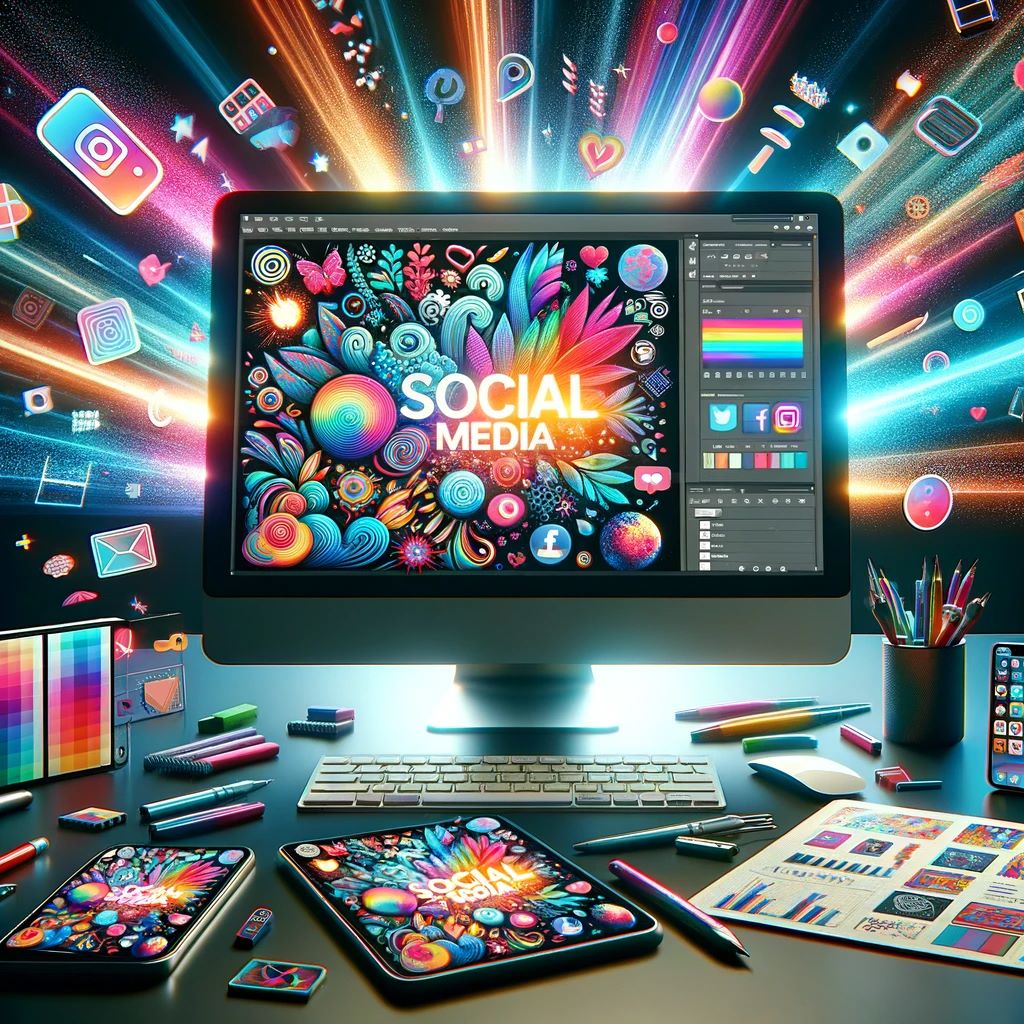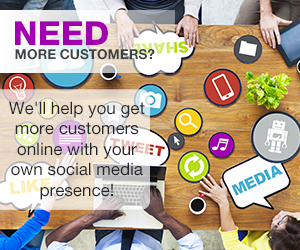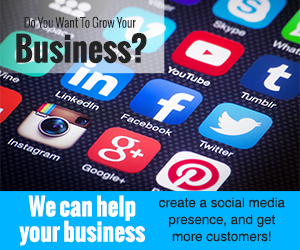Digital Social Media
Throughout the course of history, there have been significant moments that redefine the way humans communicate.
From the invention of the printing press to the advent of radio and the birth of television, each milestone has left an indelible mark on society.
In our current era, the emergence of social media has brought about a seismic shift that goes beyond mere communication; it has transformed the way we live, work, play, and even think.
The Beginnings
The profound impact of social media on our global society was unforeseen in the early 2000s.
Back then, platforms like Friendster and MySpace were the pioneers of online social connections.
These websites provided a glimpse into a whole new world of digital interaction, offering an unprecedented opportunity for personal expression and fostering connections.
Facebook’s introduction in 2004 marked a significant turning point in the era of social media, even though other platforms had laid the groundwork.
Its allure was irresistible, offering the chance to reconnect with old classmates, stay connected with family members, and foster new digital friendships.
As millions flocked to join, they brought along others, resulting in exponential growth not only in terms of numbers but also in the very nature of online social interaction.
Digital Chatter
However, to simply label social media as a mere tool for conversation in the digital realm would be severely underestimating its immense potential and widespread influence.
Recognizing this trend, businesses began establishing their online presence.
Over time, social media evolved into a vibrant marketplace, a hub for news, an exhibition space for art, and much more.
It has become a reflective surface, capturing societal changes, cultural movements, and global events.
Visual Story Telling
The significance of the saying “A picture is worth a thousand words” grew as internet speeds improved and smartphones became widespread.
Visual content took precedence over textual updates, with photos, GIFs, videos, and animations becoming the dominant language of the digital era.
Platforms like Instagram and Snapchat emerged, placing emphasis on visual storytelling and highlighting the importance of graphics in capturing attention and engagement.
Beyond Confines
The influence of social media extended far beyond the digital realm, leaving a lasting impact in various aspects of society.
Politics saw a transformation as leaders and activists harnessed its power to gather and mobilize their supporters.
Furthermore, fashion, entertainment, and sports were not immune to this influence, as trends rapidly spread within a matter of hours.
Even education and learning underwent a significant shift, as knowledge became more easily accessible and interactive.
Challenges & the Future
Despite the emergence of challenges, like the digital divide, privacy concerns, and the rise of “fake news,” social media has continued to advance with the development of technology.
Reflecting on this journey and looking towards the future, this report aims to delve deeper into the visual aspect of social media.
We will explore the significance of graphics, designs, and AI-powered content in driving this digital revolution.
Join us as we navigate through this ever-changing landscape, recognizing the power of graphics in today’s digital world and the influential role of AI in shaping our digital narratives.
Why Graphics Matter
Throughout the course of human history, the use imagery has played a vital role in communication.
Whether it be the ancient drawings found in caves or the magnificent frescoes created during the Renaissance period, visuals have always possessed a profound influence on our minds.
Images possess the ability to transcend language barriers, evoke emotions, narrate stories, and capture moments in a manner that words often struggle to achieve.
In the realm of social media, where brevity and immediate impact reign supreme, visuals are not just desirable but absolutely necessary.
A well-crafted graphic or image has the power to convey the essence of a brand, an individual’s emotions, or the message of a global movement within a matter of seconds.
Evolution of Digital Imagery
The digital era has brought about significant changes in how we create, consume, and engage with images.
In the early days of the internet, we had pixelated graphics and slow-loading images.
However, today we have access to high-definition visuals, 3D graphics, and even virtual reality experiences, all at our fingertips.
This transition from basic emoticons to the visually captivating content we see on modern platforms demonstrates the integral role that graphics play in our digital interactions.
The Emotional Impact
An impactful image has the power to evoke various emotions within us. It can make us laugh, bring tears to our eyes, or even inspire us to take action.
Viral social media campaigns are a prime example of this.
Whether it’s a heartwarming image from a non-profit organization’s initiative or a cleverly crafted advertisement from a brand, the right graphic has the ability to amplify a message in ways unimaginable.
The emotional resonance created by an image is unparalleled, making it an incredibly potent tool for storytellers across all mediums.
Simplifying Complexity
In today’s information age, we are inundated with data. However, presenting this data in a compelling manner can be a challenge.
This is where infographics come into play.
By combining design with data, complex ideas and trends can be distilled into easily digestible and visually appealing content.
These graphics are often shared and reshared on platforms like Pinterest or LinkedIn, highlighting the power of imagery in simplifying and enhancing our understanding of complex subjects.
Authenticity in the Age of Filters
While the influence of imagery is undeniable, it also possesses the potential for manipulation.
With the abundance of tools and apps that offer countless filters and editing capabilities, it becomes difficult to distinguish between reality and digitally enhanced images.
This has sparked discussions on authenticity, body image, and the impact of “picture-perfect” portrayals on mental health.
As visuals dominate our screens, the responsible and ethical use of imagery gains paramount importance.
Visuals as Cultural Milestones
Furthermore, images on social media often serve as cultural landmarks.
A viral meme, a trending hashtag associated with a graphic, or an iconic image from a global event can become ingrained in our collective digital consciousness.
These visuals not only capture moments but also define eras, making them invaluable pieces of our shared online history.
As we delve deeper into the realm of social media, it becomes evident that the stories we remember, the movements we join, and the content we share are invariably connected to powerful visuals.
Graphics are the lifeblood of digital storytelling.
With the advancement of technology and the introduction of AI and other tools, the world of digital imagery is poised for even more exciting transformations.
Graphics & Engagement
Engagement is the key to success in the bustling world of social media. Brands, influencers, and regular users all rely on it. But what drives engagement?
The answer lies in the power of visuals. Numbers don’t lie when it comes to the impact of images.
Posts with images generate 650% higher engagement compared to text-only posts. Infographics are shared three times more than any other of content.
Tweets with images receive 150% more retweets. These statistics highlight the visual-oriented nature of our digital consumption.
So why do images capture attention? The human brain processes visuals much faster than text, making them perfect for the fast-paced environment of social media.
Compelling graphics, eye-catching photos, and engaging videos draw users in and encourage interaction.
Different social media platforms prioritize different types of visual content. Instagram thrives on high-quality photos and aesthetic consistency.
Pinterest is a hub for infographics and visual guides. TikTok and YouTube emphasize video content.
Understanding these platform nuances and tailoring graphics accordingly can significantly boost user engagement.
The true power of visuals lies in their shareability. Memes, for example, rely on the shareability of humorous images and captions.
A relatable, funny, or thought-provoking image can quickly go viral, reaching a wide audience.
This organic sharing not only increases visibility but also fosters a sense of community among like-minded users.
As technology advances, interactive visuals are becoming the next level of engagement.
Interactive graphics, augmented reality filters, and 360-degree photos break traditional engagement boundaries by inviting user participation and creating immersive experiences.
In the digital realm where trust is often questioned, well-designed and transparent visuals can build trust.
Brands that consistently share high-quality and truthful visuals are rewarded with higher engagement rates and a loyal follower base.
While visuals are important, it’s crucial to strike a balance. Overwhelming users with visuals or clickbait images can have a counterproductive effect.
Visual content should align with the message and add value to the viewer’s experience.
In summary, graphics are the lighthouses guiding users to meaningful engagement in the vast ocean of social media content.
They are not just accessories to a post; they often steal the show.
Understanding the evolving dynamics of visual content and its impact on engagement is crucial for anyone looking to make a mark in the digital space.
Join us in the next chapter as we delve into the evolving trends of social media graphics and how they have shaped and been shaped by the global digital narrative.
Social Media Graphics
In the ever-changing digital world, the visual language of social media has undergone significant transformations influenced by cultural shifts, technological advancements, and evolving trends.
This chapter takes a journey through some of the most impactful graphic trends that have graced our screens, exploring the forces that have shaped them.
From the early days of social media, when graphics were simple and pixelated, to the present renaissance of digital design characterized by intricate details, shadows, gradients, and realism, the evolution has been remarkable.
Memes, a unique phenomenon of the digital age, have risen to prominence, capturing the collective consciousness of the internet.
Starting as simple image macros, memes have evolved into a multifaceted world of dank memes, reaction images, and deep-fried surrealism, reflecting the internet’s ability to quickly iterate and reinvent.
As filters and editing apps became ubiquitous, a counter-movement championing authenticity emerged.
Users began valuing raw, unedited, and candid images, embracing the #NoFilter trend.
This shift represented a broader societal move towards appreciating authenticity and vulnerability.
In the early 2010s, a design revolution occurred with the rise of minimalism and flat design.
Skeuomorphic designs that imitated real-world textures gave way to simpler icons and unadorned graphics, aligning with society’s broader inclination towards simplicity and decluttering.
GIFs, a technology from the past, found renewed relevance as looping animations became popular on platforms like Tumblr, Twitter, and Facebook.
The world of animation expanded beyond GIFs to include cinemagraphs and moving infographics, enhancing the user experience.
The introduction of augmented reality (AR) filters on platforms like Snapchat and Instagram brought a new form of interactive visual content.
These filters allowed users to transform themselves into whimsical creatures, place digital elements in the real world, or virtually try on products, hinting at the future of integrated digital-physical experiences.
Design trends often come full circle, and the return of retro aesthetics, grainy filters, and nostalgic references to the ’80s and ’90s graphics is a testament to this cyclical nature.
This trend taps into nostalgia and a longing for simpler times, showcasing the enduring charm of past eras.
The evolution of social media graphics goes beyond design history; it reflects societal shifts, technological advancements, and the dynamic nature of digital culture.
Understanding these trends provides valuable insights into the collective digital psyche and the driving forces behind it.
In the upcoming chapters, we will delve into the tools, technologies, and pioneers shaping these graphic revolutions, paving the way for the digital visual language of tomorrow.
Graphic Revolution
The world of social media graphics has witnessed significant growth, driven by the increasing demand for captivating and innovative visuals.
This evolution can be attributed to the emergence of various tools and technologies that have empowered creators to bring their artistic visions to life.
It is crucial to recognize the digital paintbrushes, canvases, and the brilliant minds behind them when discussing the story of social media graphics.
One of the groundbreaking developments in this field was the introduction of Adobe Photoshop in the late 1980s.
Initially designed as a simple photo editing tool, Photoshop quickly revolutionized digital design and became the industry standard.
Its extensive range of features including layers, filters, and numerous tools transformed any ordinary computer into a powerful design studio.
The term “photoshopped” even entered the common vernacular, illustrating the profound impact of this software.
Fast forward to the 2010s, and Canva made a significant impact on the social media landscape.
With the goal of democratizing design, this online platform provided templates, icons, and user-friendly tools that enabled even those with limited design skills to create stunning graphics.
Its influence was particularly notable for small businesses, influencers, and grassroots movements.
The rise of smartphones led to a surge in demand for mobile editing apps.
Apps like VSCO, Snapseed, and Prisma gained widespread popularity by offering unique filters, editing capabilities, and easy social sharing options.
Consequently, the line between professional and amateur editing blurred, as high-quality edits became accessible with just a tap of a finger.
Augmented Reality (AR) also played a significant role in reshaping the landscape of social media graphics.
Tech giants like Apple and Google delved into AR development, and social platforms quickly followed suit.
Snapchat’s Lens Studio and Instagram’s AR effects, powered by Spark AR, allowed creators to craft interactive and augmented experiences.
These tools not only transformed the way content was consumed but also pushed the boundaries of content creation itself.
The integration of artificial intelligence (AI) also opened up new horizons for graphic design.
Tools such as DeepArt and Runway ML harnessed the power of neural networks to transform photos into artwork, replicate famous painting styles, and even generate visuals from scratch.
The incorporation of AI promised both efficiency and an element of unpredictability in graphic design.
The accessibility of 3D graphics and virtual worlds expanded with the emergence of software like Blender and platforms like Roblox.
Social media platforms began supporting 3D content, giving creators a whole new dimension to explore creatively.
However, the evolution of these tools is not solely about technology; it is about the visionary individuals who recognized the potential of digital artistry.
Pioneers like Thomas and John Knoll, the minds behind Photoshop, Melanie Perkins, the co-founder of Canva, and Evan Spiegel, who championed AR with Snapchat, have played instrumental roles in shaping this landscape.
In summary, the evolution of graphic design on social media is a harmonious interplay between creativity and technology.
As the tools have progressed, so have the possibilities for expression, communication, and engagement.
The future promises even deeper integration, with the advent of mixed realities, AI-driven creations, and innovations that may surpass our current imagination.
In the upcoming chapters, we will shift our focus from the broader landscape to individual creators, exploring the innovative approaches of design mavens who have redefined the boundaries of what can be achieved in the realm of social media graphics.
Titans of Design
Pioneers have always emerged in various artistic movements and technological advancements, and the realm of social media graphics is no exception.
This chapter pays tribute to some of the influential creators who have not only mastered their tools but have also redefined the boundaries of digital artistry.
1. Beeple (Mike Winkelmann)
Beeple is a prominent figure in the world of digital art, known for his remarkable Everydays project.
Over the course of a decade, he produced a new piece of digital art every single day.
Beeple’s unique blend of surrealism, futuristic design, and social commentary has earned him a massive following and a significant place in the history of art.
Notably, he made headlines with one of the earliest NFT sales at Christie’s auction house.
2. Chris Biron
Chris Biron is an expert in interactive design, renowned for his work characterized by fluidity, vibrant color palettes, and immersive experiences.
His projects, often showcased on platforms like Dribbble and Behance, exemplify the potential of merging motion design with user interface principles.
3. Jessica Walsh
A creative force in graphic design and typography, Jessica Walsh co-founded the design firm Sagmeister & Walsh.
Her work is known for its innovation and thought-provoking nature.
Through her social media channels, she constantly challenges conventions and believes that design should not only communicate but also evoke emotion.
4. Jun Cen
Jun Cen is an illustrator and animator whose work embodies serenity, melancholy, and ethereal beauty.
His captivating animations, frequently shared on social media platforms, convey poignant stories within short loops.
Jun Cen’s art reminds us that even in the fast-paced realm of social media, there is room for contemplation.
5. Elise Swopes
Hailing from Chicago, Elise Swopes showcases the power of mobile photography and editing.
Armed with just her phone, she crafts surreal landscapes and cityscapes that blend reality with fantasy.
Her Instagram journey exemplifies the democratization of design and the untapped potential within our pockets.
6. Tasia M S
Tasia M S specializes in creating whimsical and interactive AR filters on Instagram, often capturing viral attention.
She represents the new generation of creators who utilize the real world as their canvas, augmented with layers of digital imagination.
7. Derrick L. Newton Jr.
Derrick L. Newton Jr. is an icon in the realm of 3D graphics and character design.
His creations, frequently shared on platforms like TikTok and Instagram, breathe life into inanimate objects.
From dancing soda cans to sentient sneakers, his work celebrates the boundless potential of animation in the age of social media.
These creators, among many others, are not just artists; they are visionaries.
They understand the ever-evolving canvas of social media and continuously adapt and innovate with each shift.
Their journeys serve as inspiration for aspiring designers to push boundaries, fearlessly experiment, and embrace the limitless creativity offered by the digital realm.
In the upcoming chapters, we will delve deeper into the world of NFTs, exploring the groundbreaking intersection of art, technology, and commerce, and how it has the potential to revolutionize the value and distribution of digital art.
The NFT Phenomenon
Over the past few years, a new and transformative entity called the Non-Fungible Token (NFT) has emerged in the world of digital graphics.
While occasionally controversial, NFTs have had a significant impact on social media graphics, and it’s important to understand their potential and challenges.
Unraveling the concept of NFTs, we find that they are unique digital certificates of authenticity stored on a blockchain.
Unlike cryptocurrencies such as Bitcoin or Ethereum, NFTs are distinct and cannot be exchanged on a one-to-one basis, ensuring the uniqueness of the digital item.
Despite the abundance of replicable content on the internet, owning a digital art piece through an NFT holds a timeless allure of ownership and exclusivity.
Just as people buy paintings even when prints are available, owning an NFT provides the satisfaction of possessing an original, authenticated piece of digital art.
NFTs have sparked a renewed excitement for digital artistry on social media platforms, bringing several implications:
1. Monetization: Content creators now have a new opportunity to monetize their creations, with some NFT sales reaching astonishing figures.
2. Increased Visibility: Platforms dedicated to NFT sales, such as OpenSea or Rarible, have expanded the audience for digital artists, offering them global recognition.
3. Interactive Art: The integration of NFTs with augmented reality (AR) and virtual reality (VR) allows buyers to not only own the art but also interact with it, adding a dynamic layer to digital ownership.
However, the NFT wave is not without its controversies and challenges:
1. Environmental Concerns: The energy consumption associated with blockchain processes, particularly on Ethereum where many NFTs are traded, has raised environmental alarms. The carbon footprint challenge has become a point of contention within the digital community.
2. Market Speculation: With the skyrocketing sales of NFTs, concerns about speculative bubbles and the sustainability of their value have emerged.
3. Copyright Issues: The ease of minting NFTs has led to numerous cases of art theft, where creators find their work tokenized without their consent.
Looking ahead, the NFT ecosystem is evolving.
Newer blockchains are promising more eco-friendly solutions, and platforms are implementing stricter verification processes.
One undeniable fact is that NFTs have transformed the perception of digital ownership, giving digital art tangible value and bridging the gap between the virtual and the real in unprecedented ways.
In summary, the NFT revolution highlights the ever-evolving relationship between technology and art.
As digital creators navigate this new world, they are not merely manipulating pixels and palettes; they are shaping the very fabric of digital culture and commerce.
In the next chapter, we will shift our focus from the digital realm to explore the tangible impact of social media graphics in the real world, encompassing branding and its role in social movements.
The Tangible Impact of Social Media Graphics
In today’s digital age, the influence of social media designs extends beyond the online realm, leaving a lasting impact on real-world events, branding choices, and societal norms.
This chapter explores the tangible effects of digital designs that break the boundaries of the screen.
1. Branding and Business
– Product Launches: Companies use captivating graphics on social platforms to create anticipation for new product releases. A prime example is Apple’s enigmatic invitations to its product launch events, which are often dissected and analyzed.
– Logo Transformations: Companies like Instagram, Pepsi, and Airbnb have faced both praise and criticism for their logo redesigns, initially introduced on social media. The public’s response has been so powerful that brands have reconsidered or even reversed their decisions.
– Limited-time Events: Brands employ social media graphics to promote temporary events that often become viral sensations. These events, ranging from art installations to immersive brand experiences, merge digital hype with real-life encounters.
2. Social Movements and Activism
– Viral Symbols: Graphics associated with movements such as #BlackLivesMatter, #MeToo, and climate change activism have become universally recognized symbols, frequently seen on signs, clothing, and murals.
– Awareness Campaigns: NGOs and activists utilize impactful graphics on platforms like Instagram or Twitter to shed light on crises, such as the Amazon fires or refugee plights.
3. Fashion and Lifestyle
– Merchandise Design: Influencers and creators often translate their digital designs into merchandise, including apparel, posters, and accessories, allowing fans to showcase and use their favorite online art.
– Tattoo Trends: Certain graphics, particularly minimalist designs or symbols, have gained popularity as tattoo choices, illustrating the deep personal connection users can form with digital art.
4. Cultural Events and Festivals
– Promotional Graphics: Events like Coachella or Burning Man release thematic graphics on social media each year, setting the aesthetic tone for the festivities.
– Digital-to-Physical Art Installations: Digital artists are increasingly invited to festivals to transform their virtual designs into physical installations, bridging the gap between the screen and physical space.
5. Education and Learning
– Infographics and Charts: Complex data and concepts are often distilled into visually appealing graphics on platforms like LinkedIn or Pinterest. These designs frequently find their way into classrooms, presentations, and workshops.
The impact of social media graphics extends far beyond mere likes, shares, or retweets.
These designs reverberate in boardrooms, streets, festivals, and personal spaces, shaping perceptions, inspiring actions, and often becoming an integral part of our physical reality.
In the next chapter, we will explore the potential future of social media graphics, delving into emerging technologies and how collaborations between humans and machines might redefine artistic expression.
The Future of Social Media Graphics
As we explore the evolution, impact, and key players in the world of social media graphics, it’s time to look ahead and consider what the future holds for digital artistry on these platforms.
With the integration of artificial intelligence, virtual reality, and quantum computing, along with human creativity, the possibilities are endless.
1. Collaborating with Deep AI
– Adaptive Design Algorithms: AI has the potential to understand user preferences and adapt designs accordingly. Imagine graphics that evolve based on the audience’s mood or reactions, creating a more interactive and engaging experience.
– Innovative Creation Platforms: Platforms that can instantly visualize ideas from textual prompts, like OpenAI’s DALL-E, are already pushing the boundaries. These platforms bridge the gap between imagination and creation, allowing for intricate designs to come to life.
2. Advancements in Augmented and Virtual Reality
– Shared Augmented Spaces: Augmented reality may move beyond individual experiences and into shared environments. For example, a virtual art gallery could be designed in a park, and anyone with AR glasses could collectively step into that space.
– Full Immersion Virtual Worlds: As virtual reality technology progresses, we may see platforms where users not only view content but also live within it. Artists and designers would create immersive experiences rather than just visuals.
3. Quantum Computing and Design
– Real-time Complex Simulations: With the power of quantum computing, designers could simulate real-world physics in their graphics. This means hyper-realistic virtual experiences with elements like flowing water or rustling leaves.
– Advanced Material Design: In the realm of fashion and product design, quantum simulations could help create digital materials that accurately mimic real-world textures.
4. Personalized and Dynamic Graphics
– Adaptive Advertisements: Ads on social platforms could adapt in real-time based on the viewer’s recent experiences, preferences, or even emotional state. This could be achieved through biometric feedback.
– Personal Digital Artists: AI-driven digital assistants may curate and create content tailored to an individual’s aesthetic preferences. This ensures a constant stream of personalized visual content.
5. Ethical and Sustainable Design
– Low Carbon Footprint Platforms: With increasing environmental concerns, platforms that prioritize energy-efficient design processes may become the norm.
– Ethical Design Protocols: As digital well-being awareness grows, standardized protocols for designs may be established. These protocols would ensure inclusivity, accessibility, and the avoidance of harmful biases or stereotypes.
The future of social media graphics is a fusion of technology and human creativity.
Boundaries between the real and virtual will blur, and art will become a dynamic and ever-evolving entity.
As designers and consumers of this content, we stand at the brink of a renaissance, ready to witness and create marvels that were once confined to the realms of science fiction.
In the final chapter, we will reflect on our journey through the world of social media graphics and emphasize the universal truth that every pixel and palette holds a story waiting to be told.
Pixelated Stories
As our exploration nears its culmination, we are reminded of a timeless truth.
Whether we delve into the evolution of designs, technological wonders, or influential artists, every graphic holds a story at its core – an emotion, a vision, a message.
Social media graphics, in all their magnificence, serve as vessels of human expression.
1. The Enduring Power of Storytelling
– Echoes of the Past: The human inclination for storytelling has existed since ancient times, as witnessed by prehistoric cave paintings. Just as our ancestors depicted tales of hunts, deities, and dreams on the walls of caves, today’s digital artists convey their narratives on the screens before us. The medium has transformed, yet the essence remains.
2. Resonating with Emotion
– Shared Feelings: Graphics that capture our attention or spread like wildfire often tap into universal emotions. Whether it evokes joy, nostalgia, hope, or protest, effective designs resonate because they echo common human sentiments.
3. Amplifying Diverse Voices
– Inclusive Design: The democratization of design tools and platforms means that stories from diverse cultures, backgrounds, and orientations find representation. Each graphic contributes to the vast mosaic of human experience.
4. Beyond Aesthetics
– Designs with Intent: While aesthetics are crucial, the most impactful graphics often serve a purpose – be it raising awareness about a cause, educating viewers, or simply bringing a much-needed smile.
5. The Ever-Changing Narrative
– Dynamic Storytelling: Just as stories have evolved from oral traditions to printed books to digital podcasts, the narrative within social media graphics is constantly evolving. With technological advancements, these stories become more interactive, immersive, and multi-dimensional.
In Conclusion
As we stand at the crossroads of art and technology, reflecting on our journey and looking ahead, we are reminded of the heartbeat that pulses through every design.
It is more than just pixels, color palettes, or algorithms. It encapsulates the human touch, the stories we yearn to share, and the connections we strive to create.
So, the next time you scroll through your feed, pause at a design, or share a graphic, remember – you are not simply interacting with a visual element.
You are engaging with a tale, a dream, a vision. And in this vast digital universe, every story, including yours, holds a unique space and significance.
Thank you for accompanying us on this enlightening journey through the realm of social media graphics. Here’s to countless more stories waiting to unfold and be celebrated.














Post a Comment